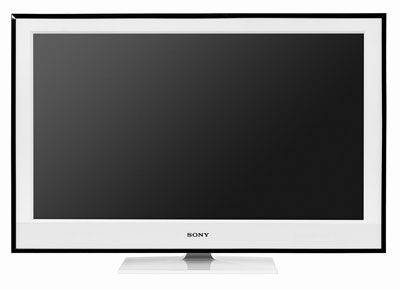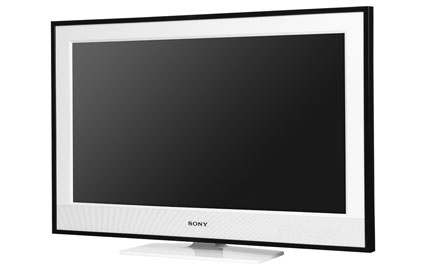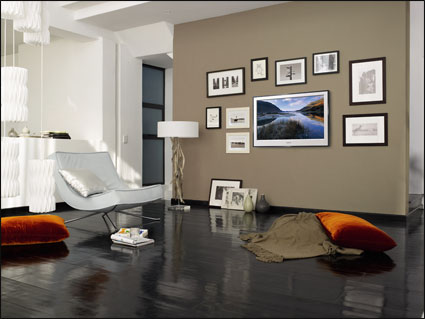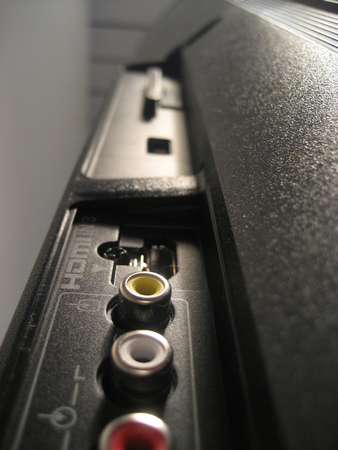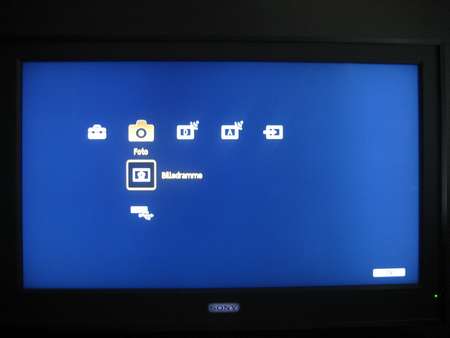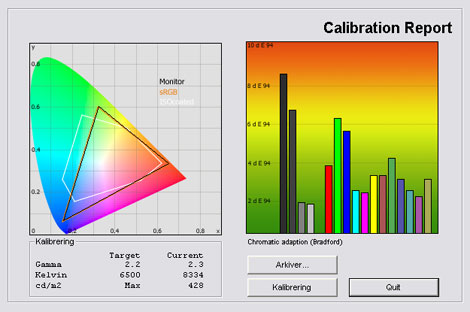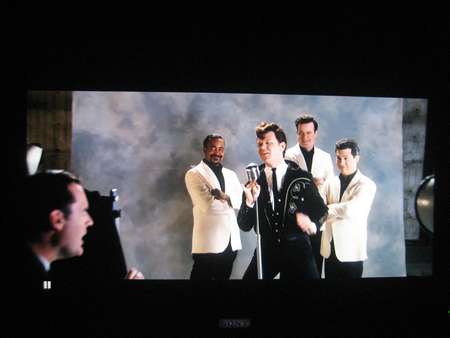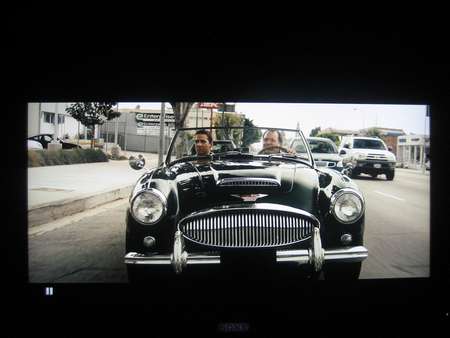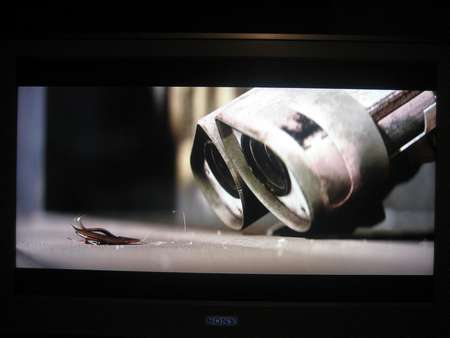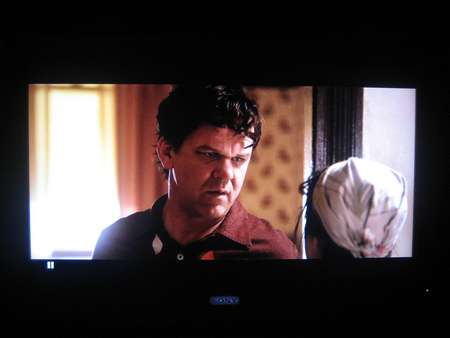Review: Sony E series
Introduction
This review has been translated from Danish and contains the introduction, measurements, pictures and a conclusion. Some sections have been excluded from the translation, however. Future reviews will be fully translated.
Sony presented their E Series as a combination of a modern picture frame, incorporating a so-called Picture Frame feature, and a TV. The Picture Frame mode allows the user to display pictures or paintings as one would in a traditional picture frame, with paintings from for example Van Gogh - or your own pictures and photos.
The model is available with several different frames. Common to them all is the white front. The variant we test here is called 40E4020, which is a 40-inch TV with an outer aluminum frame.
Sony E4000 series is also technically identical to the W4000 series, so the results from this review apply to the W4000 series as well.
Size: 40" widescreen (LCD) Resolution: 1920x1080 Response time: - Contrast ratio: 33000:1 (dynamic) Brightness: - Colours: 16,7 millioner Signal processering: 8 bit for each colour Viewing angles (H/V): 178°/178° Dot pitch: - Panel (Type): S-PVA (LCD) Power consumption: 176W Wall mounting: Swivel stand: Dimensions (HxWxD): 69.5cm x 100.6cm x 28.3cm (uden fod) Weight 22 kg Built-in speakers: 2x10W
Inputs: 480p/i, 576p/i, 720p, 1080i & 1080p (50, 60 & 24p) 1:1 pixel mapping: Inputs • VGA • DVI (can be converted through HDMI)
• Audio (type) (Audio in/out)
• SCART (2 inputs)
• S-video • Composite • Component 
• HDMI (3 inputs)
• Andet Outputs • Audio (type) (1 output)
• SCART • S/PDIF (optical)
• Other Tuners • Analogue • DVB-T • DVB-T (MPEG4) • DVB-C • DVB-C (MPEG4) • DVB-S • DVB-S (MPEG4) Guarantee: Pixel guarantee: Etc:
Price and retailer:
Our first impressions
The TV’s white frame is in stark contrast to most of TVs on the market today. The black glossy frame is dominating, and although it appears that white is becoming more popular, there are still very few white products out there.
Sony's E Series is one of them, however, and this variant (E4020) has a white / aluminum frame. Design is, of course, a matter of taste, but in my opinion Sony has made a noble effort to create something new – with success.
The E series is beautiful and has a solid finish. The product feels nice and the frame exudes harmony.
The stand is also white and has a glossy surface. It also allows the user to manually swivel the TV. But I have to agree with Sony; this TV is designed for wall mounting.
The speakers are located at the bottom. On left side of the TV some input for digital cameras has been fitted. Including; a HDMI input, a USB input and a headphone output.
At the top of the frame you’ll find some discrete buttons.
The rest of the inputs are located on the back of the TV and points towards the wall which is sad to see. It can be a problem if you want to put the Sony E series close to a wall.Test tools
Our TV signal is DVB-S (satellite) and DVB-T (terrestrial). We also have an analogue TV connection.
Testing is done with the DVE (digital video essentials) and Peter Finzel test DVD. Testing is also done in practical uses such as DVD, TV, Blu-Ray and Mediacenter/PC.
We also use our own monitorTest that has a lot of the same – and more – tests from the traditional discs and programs.
Sony PlayStation 3 is our Blu-Ray player.Functionality
Let’s take an initial look at the remote. It is, of course, white but the finish does not feel as exclusive as the TV. It is white plastic but I think it would have been a nice touch if the top of the remote was an aluminum alloy.
The buttons are well organized, albeit a bit confusing because of the many colors. However, I am sure that many users will appreciate the relatively large buttons for program selection and volume control.
Let’s also talk a little about Sony's new menu and Picture Frame mode.
The menu is the so-called Xross Media bar (pronounced"X cross"); the same one as used in the Sony PlayStation 3. It is not as advanced and not as nice-looking as the Xross on the PlayStation 3 but the idea and functionality is good.
Picture Frame mode allows the user to turn the TV into an electronic picture frame. You can choose from the pre-installed painting like the Van Gogh or you can use your own photographs and paintings.
The feature is also quite useful in practice, but not something I would assign great weight to. The Picture Frame mode is also integrated in other Sony TVs.Picture quality
This section has been abridged because of our translation. The graphs, pictures and tables have been kept in order to show the results from our tests. After this section you can find the conclusion which has been fully translated and extended.
“Out–of-box picture quality”
The graph says:
The number on the left is the delta value. Delta is a difference between two factors, here it’s the difference between the measured colour on the panel and the actual colour that we want; the target colour.A delta value lower than 2 results in a visible deviation from the actual colour. A delta value over 4 or 5 results in wrong colours. A delta value between 1 and 2 results in precise but not perfect colours. A delta value lower than one results in almost perfect colours. The target is 0. Everything between 0 and 1 is barely visible to the human eye.
Picture settings after calibration:
After calibration Profile: Cinema Contrast 80 Backlight: 2 Brightness: 56 Colour saturation: 50 Colour temperature: Warm 2 Sharpness Minimum Noise reduction Off MPEG-noise reduction Off Advanced contrast imp. Off Vivid colours Off Colours spectrum Standard
We have measured contrast; the ratio between brightness and the black levels: NB: This is the static contrast and no dynamic contrast has been measured.
| Out-of-Box | After calibration | |
| Black | 0,14 cd/m2 | 0,08 cd/m2 |
| Brightness | 428 cd/m2 | 187 cd/m2 |
| Contrast ratio | 3057:1 | 2338:1 |
Contrast ratio +/- 50
We have also examined the homogeneity of the panel. You can see from the picture below (click to enlarge) that only very little backlight bleeding is present. It has been somehow amplified by my camera.
PC and media center connectivity
The screen supports 1:1 pixel mapping in 1920x1080.
Viewing angles
Viewing angles in practice:
Conclusion
The Sony E series in white glossy design is an exciting addition to a market dominated by the black glossy finish. White is the new black and I personally think that Sony has done a great job with the E series look. It looks very nice on black furniture and I can imagine that it looks great on a wall as well.
The new Picture Frame mode that can turn your display into a digital picture frame is a nice feature but nothing spectacular.
But let’s summarize our thoughts about the picture quality (picture quality section left out due to translation) on the Sony E series.
Sony has definitely improved the picture quality from previous generations, and it is encouraging to find that Sony tries to improve the default settings to comply with the picture standards. I still think, however, that there is a big gap between the expensive Sony models and the mid-end Sony models. The analogues picture is pretty weak for example. Digital signals and HDTV is far better though and the picture quality is fair.
Blacks are fair but not on par with the best plasma TVs. Sony also struggles with shadow details and most of the very dark shades are reproduced as the same colour. Dark shades on the E series also have a tendency to provoke trailing on moving elements on the panel.
Colours are not spot-on but far better than on previous Sony LCD-TVs. Colour temperature is too high “out-of-box” though.
In overall the image quality is fair but not really impressive. Compared to a popular mid-end screens such as the Panasonic PX80, Sony is trailing. Not by a lot but Panasonic PX80 is cheaper and has better picture quality.
The E series is available from 26 to 40 inches. The E4020 has an outer aluminum frame; E4000 has a white outer frame.
| Pros | Cons | Target group |
| Out-of-box settings | Shadow detail | Living room |
| Deep blacks | Analogous picture | Home cinema |
| 1080p24 support | Bedroom / childrens room | |
| Design |
Price and retailer:

---
For questions and comments please visits this thread in our forums http://www.flatpanels.dk/flatforum/viewtopic.php?t=8256


